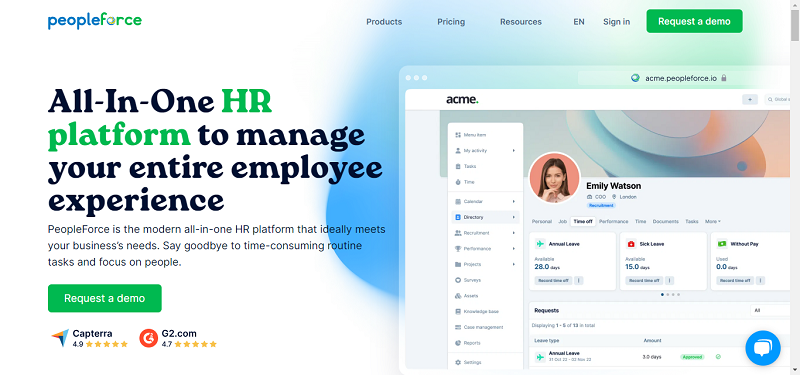Looking back, business owners talked to their customers and employees in person or by phone. This human contact was more personal and the heart of any good business. As technology advanced in the 1990s, organizations latched on to platforms losing sight of the people behind them. The problem is that, as Bob Seger once noted, “today’s music ain’t got the same soul, I like that old time rock ‘n’ roll.”
The modern organization demands a reemergence of people at the heart of business, connecting employees and customers in a personal way more than ever. The maturation of social media is forcing organizations to evaluate options and integrate collaboration technology. Following an impact study of collaboration tools, Paul Leonardi and Tsedal Neeley found that employees who had used “collaboration tools became 31% more likely to find coworkers with expertise relevant to meeting job goals.” Separately, they found that, in one case, collaboration led to increasing customer retention by more than 200%.
Collaboration technology is not just for socializing – it is a medium to get results. Organizations recognize the importance of internal and external collaboration, an Instance of this was Tesla. Tesla’s lead architect, Jay Vijayan, needed an enterprise platform that could move with speed and agility. The leaders at Tesla wanted information to spread seamlessly across departments as well as provide opportunities for feedback loops with its customers. Tesla simply could not find it in the market. Rather than attempt to integrate multiple, existing platforms, Tesla decided to build their ERP system from the ground up!.
Understandably, most organizations do not have the luxury to start from scratch. They’re going to start with what they have on hand and, unfortunately, some organizations leap before they look. In speaking to a leader of a large non-profit, the leader explained to me that the non-profit integrated a well-known social media tool that, while used, was wholly ineffective and created more ‘noise’ than ‘signal’.
Throwing social media tools at an undefined problem is a recipe for failure, and organizations need to recognize where they stand. For organizations to be successful in establishing a collaborative enterprise, they will need to 1) recognize the maturity level 2) start small 3) scale quickly.
Recognizing your organization’s maturity in collaboration is the first step. The below maturity model describes how well organizations integrate both internal and external facing collaboration tools.
|
Limited (Immature) |
Developing |
Leading (Mature) |
|
| Internal Facing (Employee Base) |
|
|
|
| External Facing (Customer Base) |
|
|
|
Based on your organization’s maturity, you should start experimenting using small pilots that drive you towards the next maturity level. Piloting with smaller groups helps in two ways 1) it can provide the groundswell support for a collaboration initiative and 2) it can help confirm the usefulness of a tool or enhancement. By tailoring pilots to your organization’s specific challenges, you can identify value early and scale accordingly.
In my own work, we piloted a tool to connect a small group of employees together through picture based directory. The organization we were working with was geographically dispersed and many personnel worked with colleagues who they only knew by voice and name but not by face. While initially slated for a handful of employees, the value proposition was clear enough – the tool was connecting people, providing an opportunity for employee recognition, and giving a voice to the people behind the organization.
Once business value is identified through pilots, Scaling the implementation quickly means scaling the value quickly. Reid Hoffman coined the term Blitzscaling, which means “what you do when you need to grow really, really quickly.” While this term was aimed at startups, the same principles apply to nimble, IT organizations looking to implement solutions at scale across an enterprise.
This speed of implementation positions organizations to stay ahead of the competition. Tesla was able to implement its entire collaborative ERP platform in four months, enabling the company to provide transparency into its own operations as well as customer feedback – an area where long-standing car companies have yet to succeed. If you own a non-Tesla car, just think how connected you are to the feedback loop into that company – minimally or not all.
To unearth this level of personal engagement, leaders need to recognize their unique challenges quickly if they want a competitive advantage. Opening up your intranet pages will quickly tell you whether or not your organization is oriented around its people and its customers. Is your employee portal about you and your position in the organization or is it just about the organization? Does your intranet have a picture based directory that connects your with your colleagues? Does your employee portal give you network recommendations based on your expertise? Does your portal have a space to view customer feedback in real-time?
As you answer these questions and more, you’ll be able to assess where your organization lies on the spectrum of maturity. Based on your respective organization’s maturity, you can pilot technology tailored to your organization’s most pressing issues. With a small number of personnel, no more than ten users, you can identify the most productive and valuable opportunities. Based on these pilots, you can scale the most effective options. This common-sense approach is more strategic and cost effective than driving large-scale ERP changes and assessing the results afterwards.
By starting small and focusing on value, modern organizations can move quickly. This nimble approach helps to keep an edge on competitors by driving real-time feedback from its employee base and its customers. This enhanced engagement differentiates the experience for both employee talent and customers. To position for success, modern organizations should aim to get back to their roots, make personal connections, and get back to that old time rock ‘n’ roll.
By Deepak Marwah





